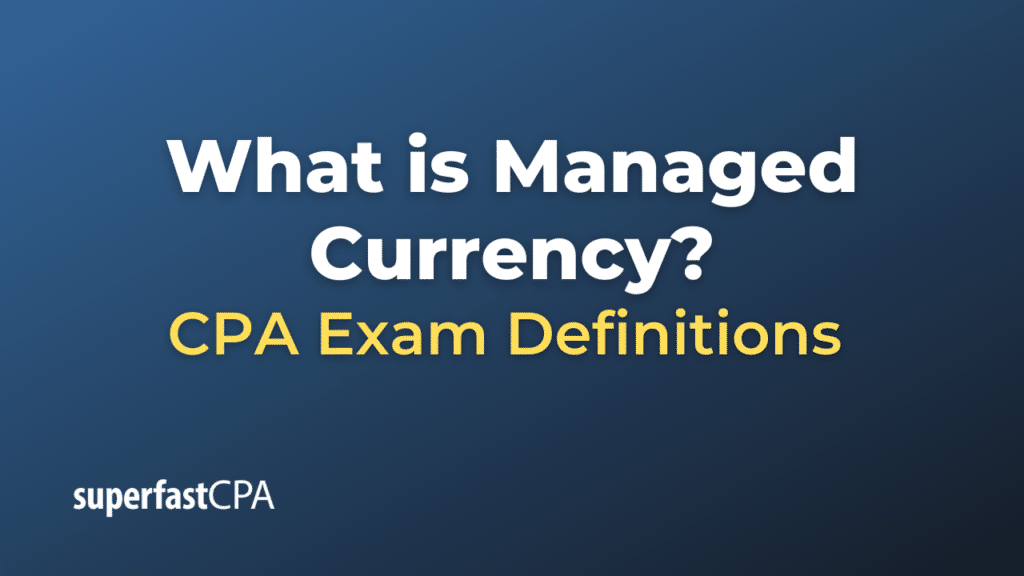Managed Currency
A managed currency is a currency whose exchange rate is affected by the intervention of a central bank. It is somewhere between a freely floating currency (which is completely subject to the forces of the foreign exchange market) and a fixed currency (which is set at a pre-determined level or range against another currency or basket of currencies).
A central bank may decide to manage its currency for a variety of reasons. For instance, it may wish to prevent excessive volatility, counter inflationary or deflationary pressures, maintain competitive export prices, or manage international debt repayments.
The central bank achieves this management by using its foreign exchange reserves to buy and sell its own currency on the international market, thus affecting supply and demand for the currency and influencing its exchange rate. Other tools can also be used, such as interest rate changes, capital controls, and public declarations (“jawboning”).
It’s important to note that while such intervention can influence exchange rates in the short to medium term, long-term exchange rates are ultimately driven by fundamental economic forces. If a central bank’s exchange rate targets do not align with these fundamentals, it may have to resort to drastic measures to uphold them, such as large-scale asset purchases or strict capital controls, which can have significant economic side-effects.
Example of Managed Currency
Let’s consider the example of China, a country known for its management of the yuan (or renminbi), its national currency.
China’s central bank, the People’s Bank of China (PBOC), sets a daily reference rate for the yuan against the U.S. dollar and allows the currency to fluctuate within a narrow band (2 percent above or below the reference rate).
For instance, if the PBOC sees that the yuan is getting too strong (which might hurt exports), it might sell yuan and buy U.S. dollars. This increases the supply of yuan and decreases the supply of dollars, which could help to weaken the yuan against the dollar.
On the other hand, if the yuan is getting too weak (which might cause capital outflows and inflation), the PBOC might sell U.S. dollars and buy yuan. This decreases the supply of yuan and increases the supply of dollars, which could help to strengthen the yuan against the dollar.
This is a form of a managed exchange rate system, as the central bank is actively intervening in the foreign exchange market to influence the value of its currency. However, such interventions are often controversial, as they can be seen as a form of currency manipulation, giving the country an unfair advantage in international trade.













